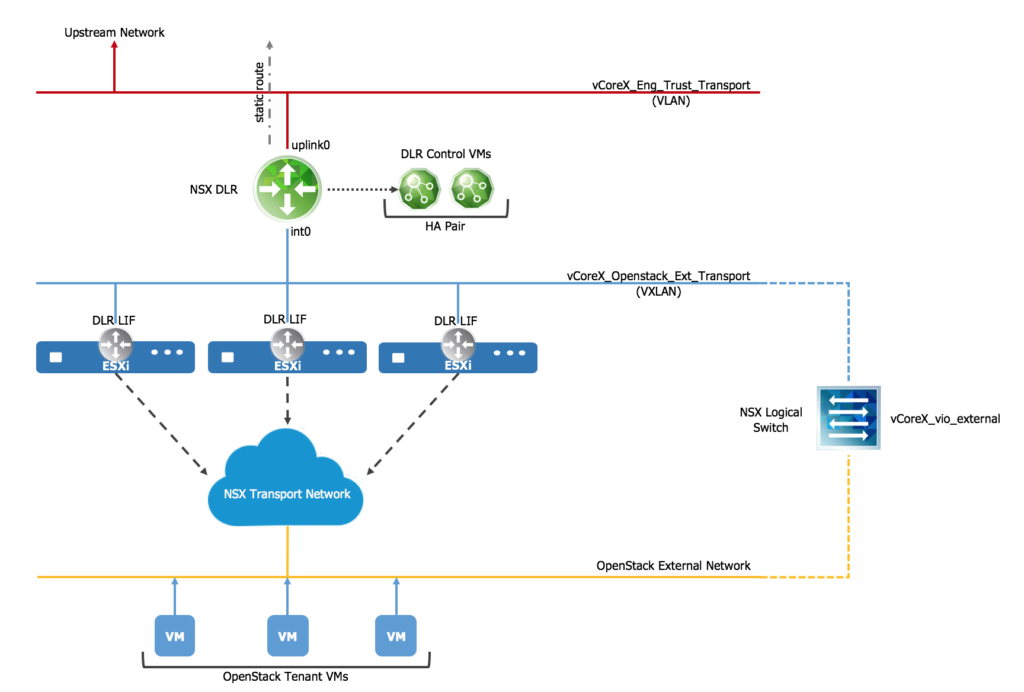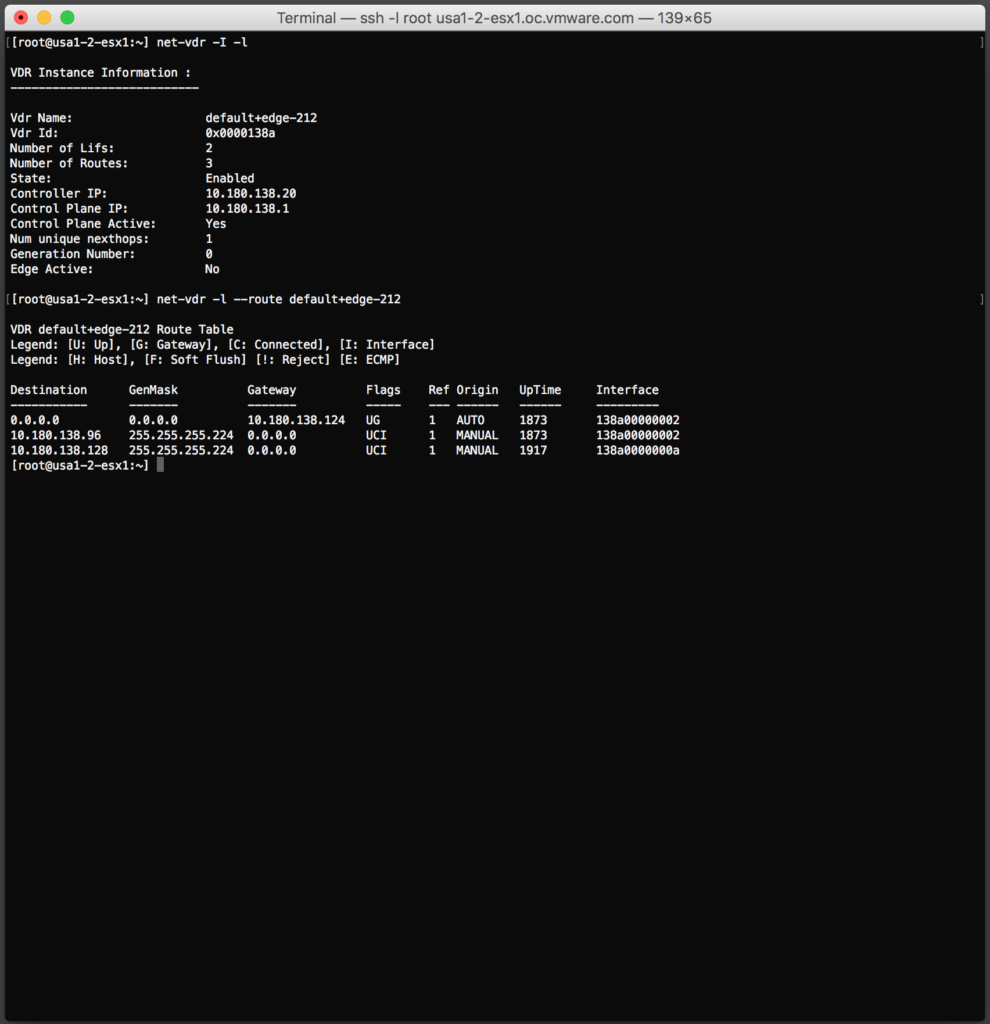
This next post in the series about multi-tenant OpenStack with NSX will discuss the use of a Distributed Logical Router as the bridge between OpenStack and the physical network. If you have not read the previous posts in the series, you can catch up by reading this one.
Originally the plan had been to segment each OpenStack tenant off with their own HA-pair of NSX Edges. However, after discovering that OpenStack does not honor the tenant-id parameter, nor the disabling the Shared parameter within the external network object and adjustment had to be made. Working through the problem it became clear that a NSX Distributed Logical Router (DLR) could be leveraged and would also scale as the environment grows beyond a few dozen tenants. The new multi-tenant network design for OpenStack now looks like this:

The logical diagram shows how the uplink of the DLR is the upstream (north-south) boundary for the environment. The internal interface on the DLR is the external OpenStack network, and is leveraging VXLAN to provide the floating IP addresses the OpenStack tenants will consume. If you are unfamiliar with how a DLR operates, I recommend reading this post from Roie Ben Haim on his blog.
Basically, the DLR relies upon two components — the control VMs and a kernel module inside vSphere to inject routing on each ESXi host within the NSX transport zone. It is the inclusion of this kernel module on every ESXi host that will allow this virtual network design to scale as the environment does. In the previous design, the individual NSX Edges would merely be deployed in an HA-pair and only the active VM would be handling all of the traffic for that particular tenant. With the DLR, although all tenant traffic will be going through the single layer, that layer is distributed across the entire workload environment.
After the DLR is created, the routes can be see within each ESXi host, as shown in the following image.

The downside that still remains is the shared pool of IP addresses for all tenants to consume from. Operationally it will mean having to manage the tenant quotas for floating IP addresses and making sure there is no over-allocation. I would still like to see the OpenStack community take on the extra work of honoring the tenant-id parameter when creating an external network within OpenStack so that the option would exist to have individual tenant floating IP address pools.
Tuesday’s post will include detailed instructions on how to deploy and configure both the NSX portion of this deployment and the OpenStack pieces to tie it all together. Enjoy!







